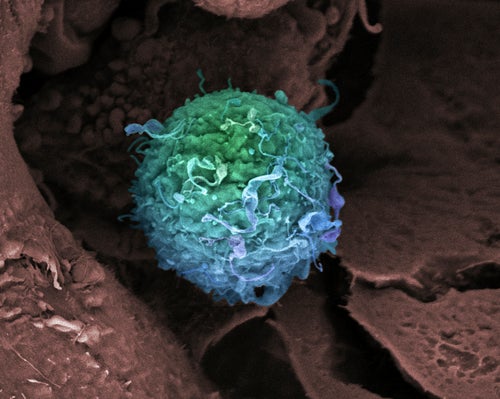Researchers believe they have beaten the "Death Star" of cancer with a new method of treatment involving nanotechnology.
Scientists were able to combat metastases, which is one of the most formidable features of cancer where cancerous cells breakaway from the point of origin to another part of the body, by delivering a standard chemotherapy drug using nanoparticles.
The key, they claim, is to use a nanoparticle generator that can deliver drugs into the nucleus of the cell, bypassing the tumour's natural resistance.


Published in the Nature Biotechnology, the study has conducted experiments on mice with breast cancer that had spread to their lungs.
Lead scientist, Mauro Ferrari, who lead the work at the Houston Methodist Research Institute in Texas, said the results were "astounding."
According to Phys.org, he said: "This may sound like science fiction, like we've penetrated and destroyed the Death Star, but what we discovered is transformational.
"We invented a method that actually makes the nanoparticles inside the cancer and releases the drug particles at the site of the cellular nucleus.
"With this injectable nanoparticle generator, we were able to do what standard chemotherapy drugs, vaccines, radiation, and other nanoparticles have all failed to do."
He added: "I would never want to overpromise to the thousands of cancer patients looking for a cure, but the data is astounding."
The research found that 50 percent of the mice treated using nanotechnology had zero trace of the disease after eight months.
In order to achieve this the team delivered an anti-cancer drug, doxorubicin, within a nanoporous silicon material, dubbed an injectable nanoparticle generator, which breaks down once inside the body.
To understand how the material works, we need to take a quick tour of GCSE chemistry.
The generator is a polymer, which is a large molecule made up of repeating subunit, known as monomers.
In this particular instance, the monomers contain the anti-cancer drug.
Once the generator is released into the body, the polymer breaks down into its single units, which the cancer cells take.
These nanoparticles then enter the nucleus, where the drug is released, causing the cell to die.